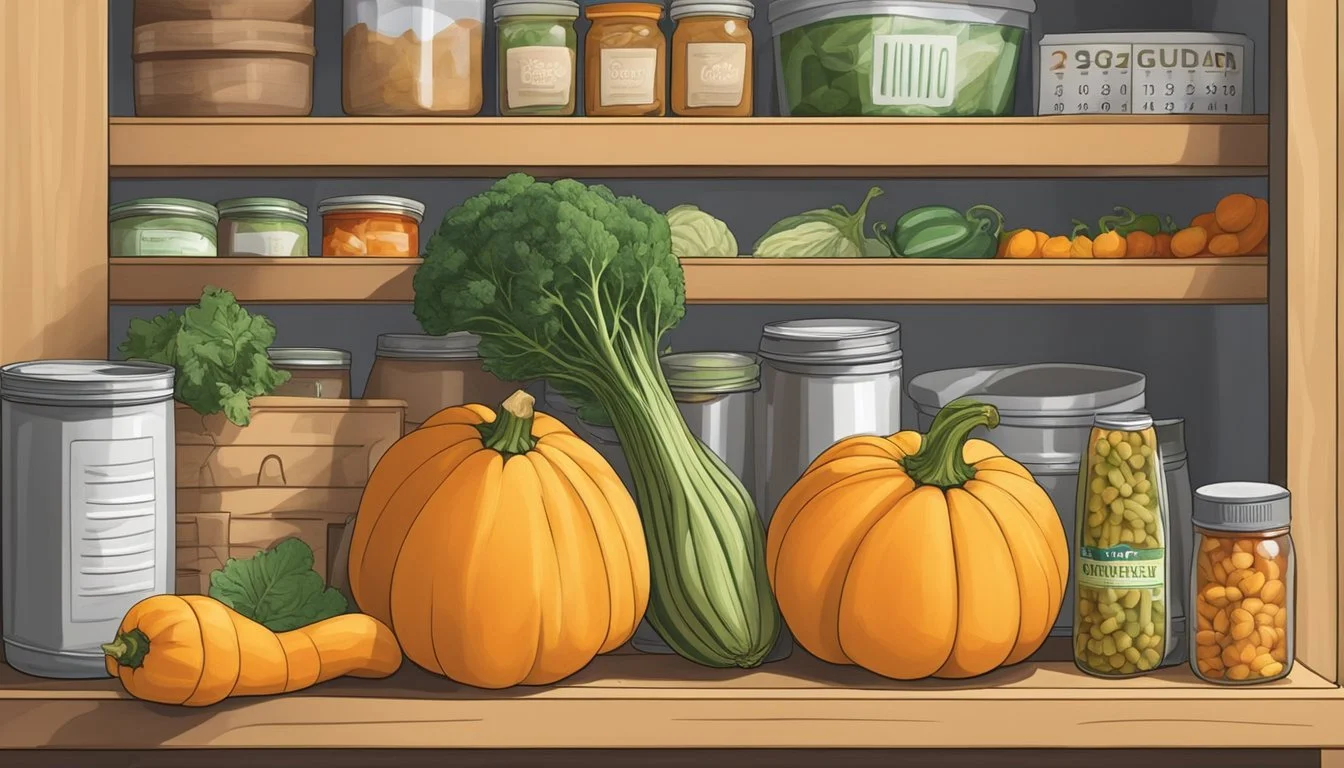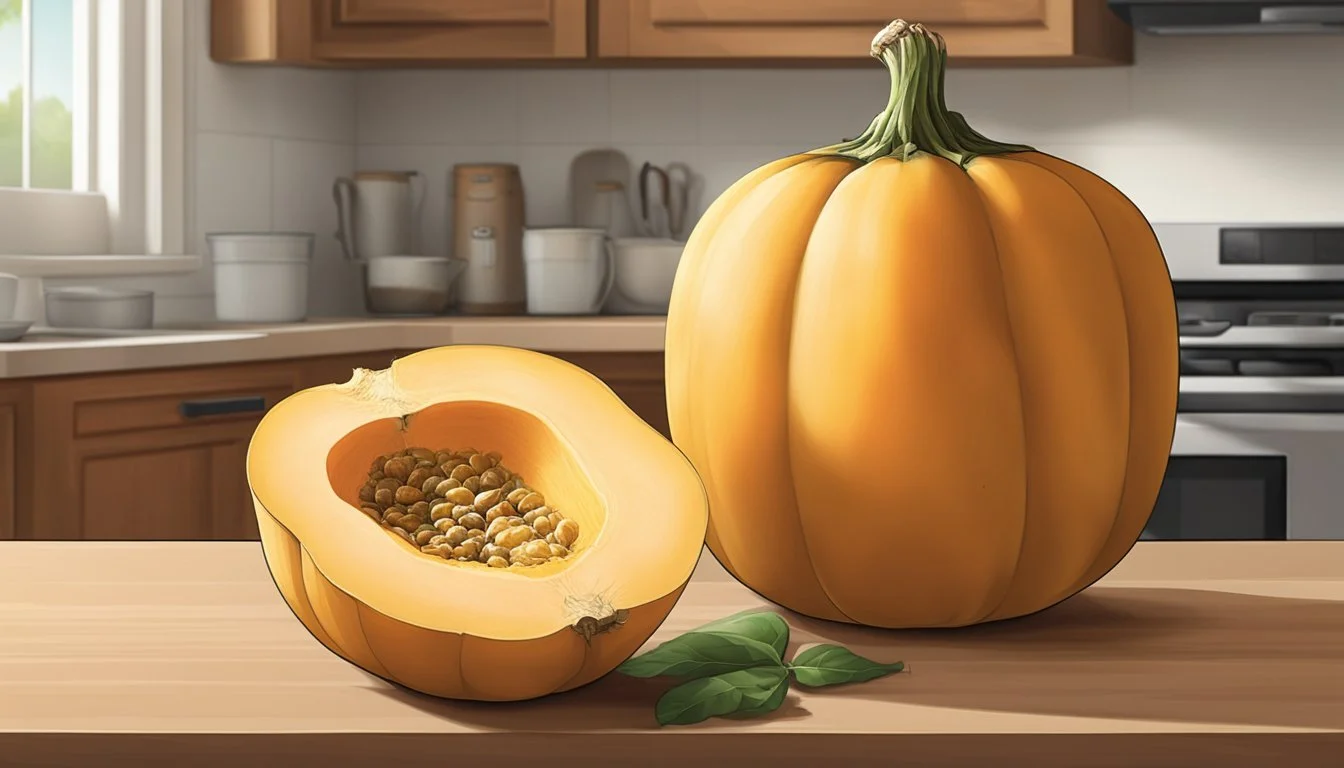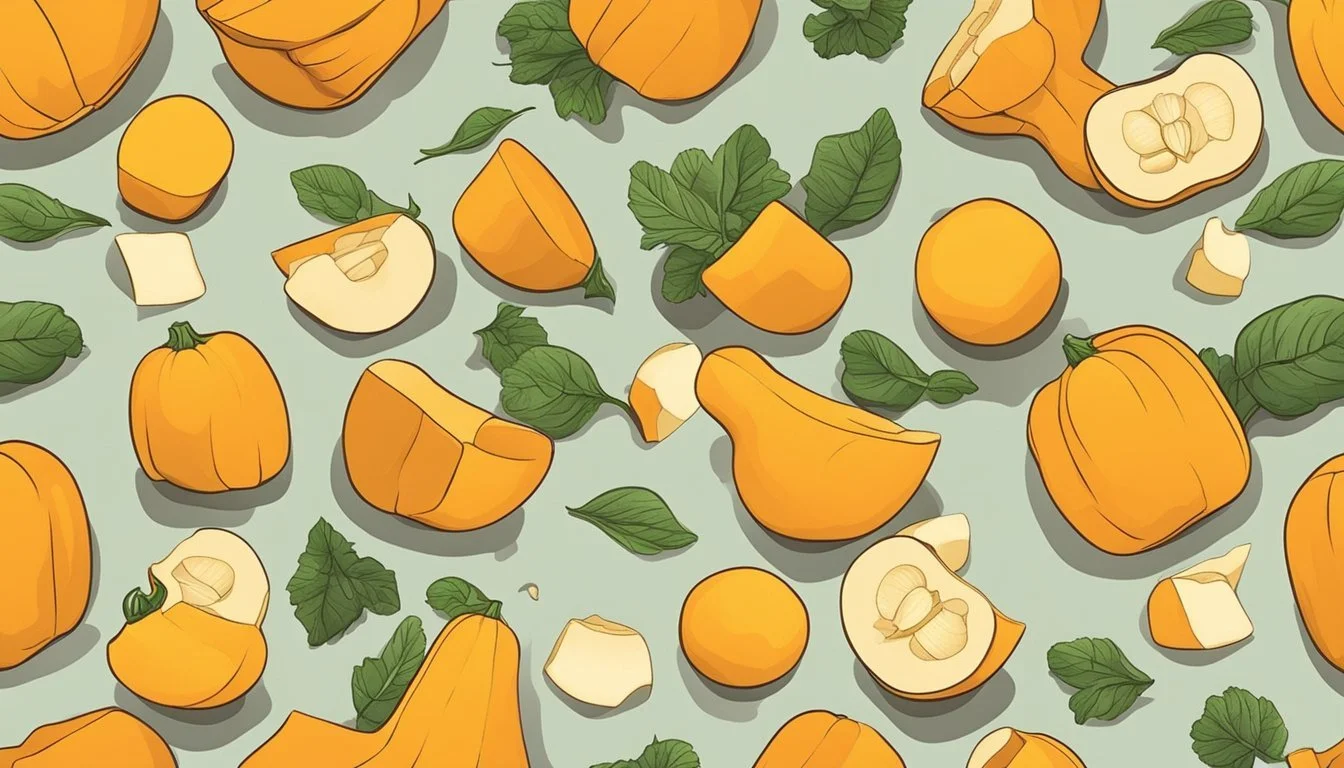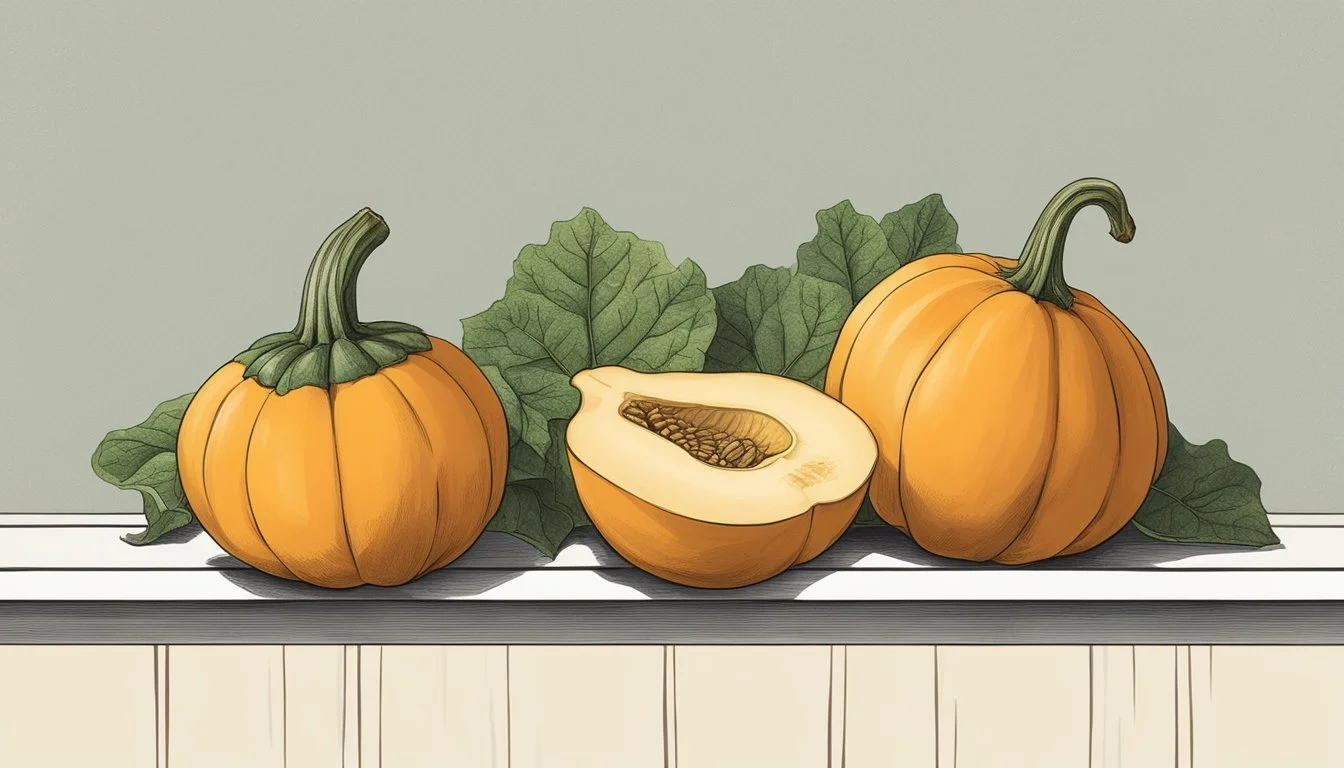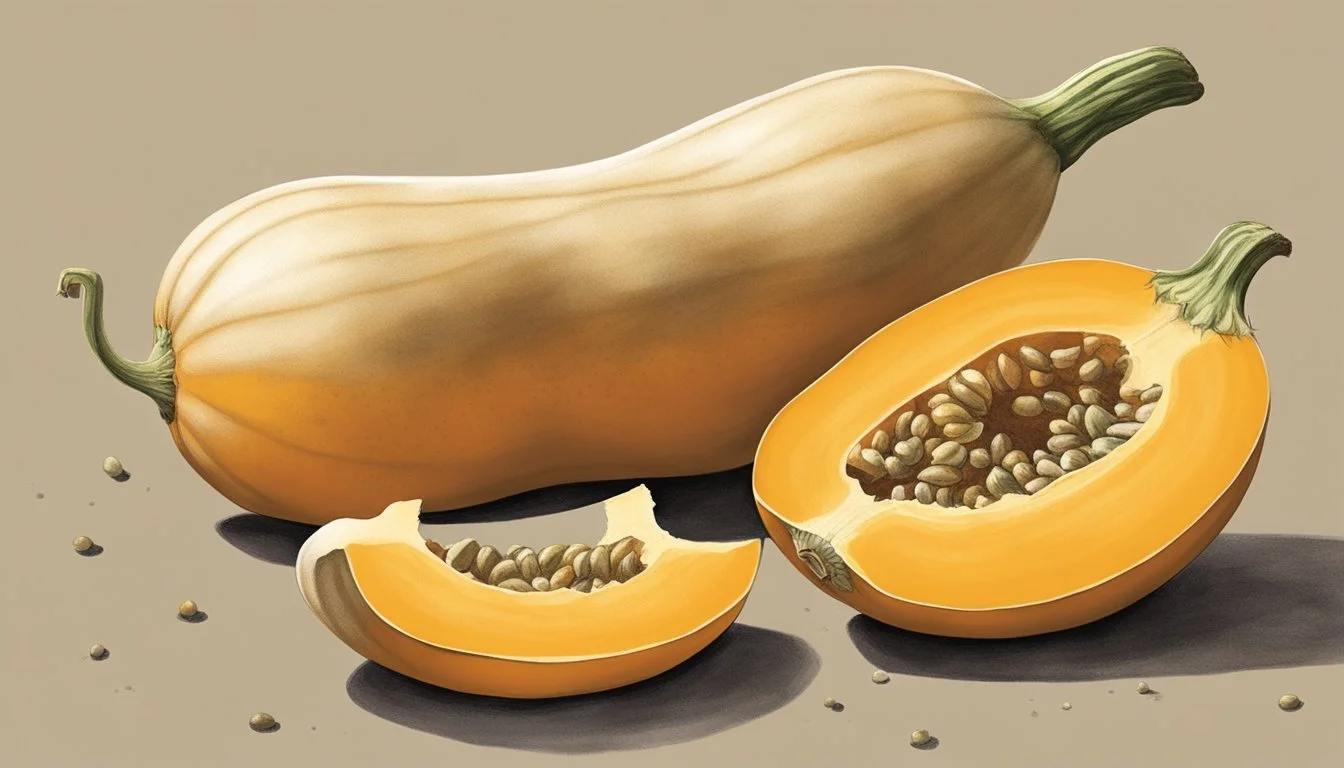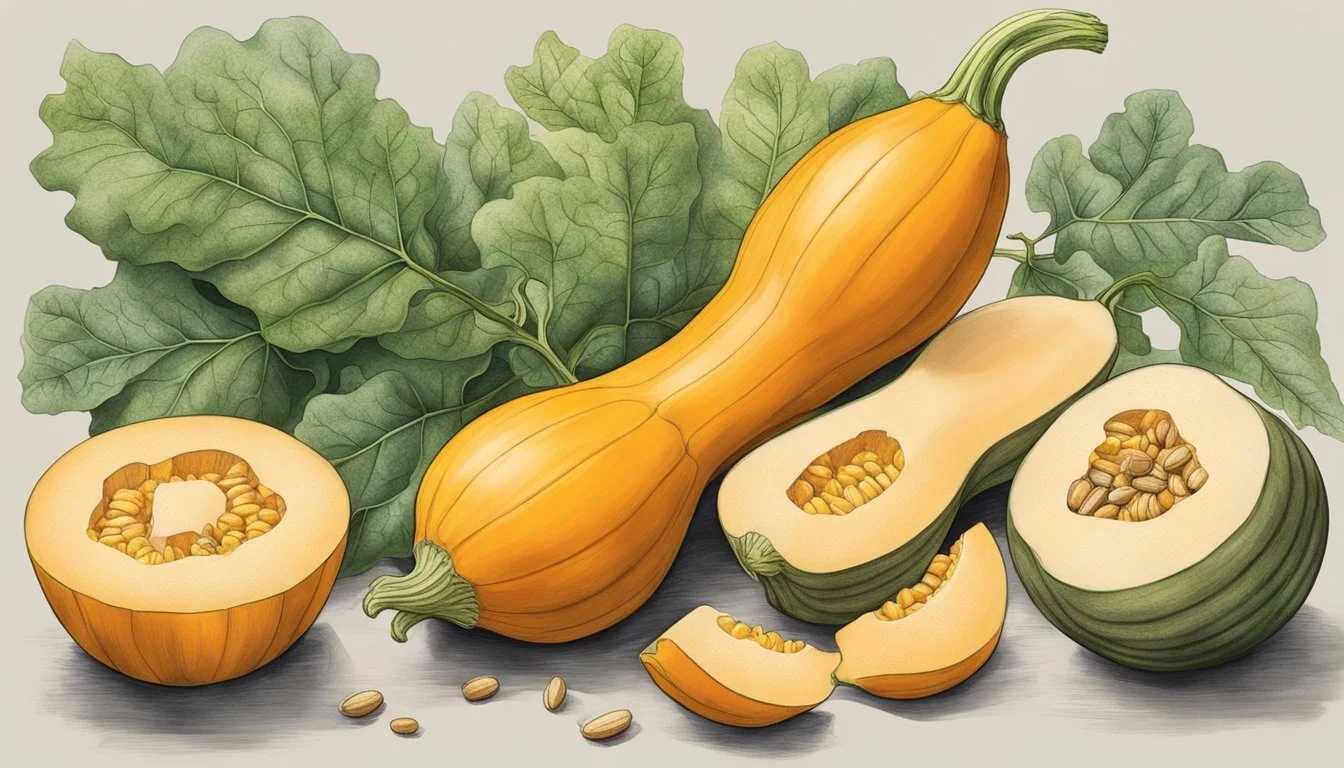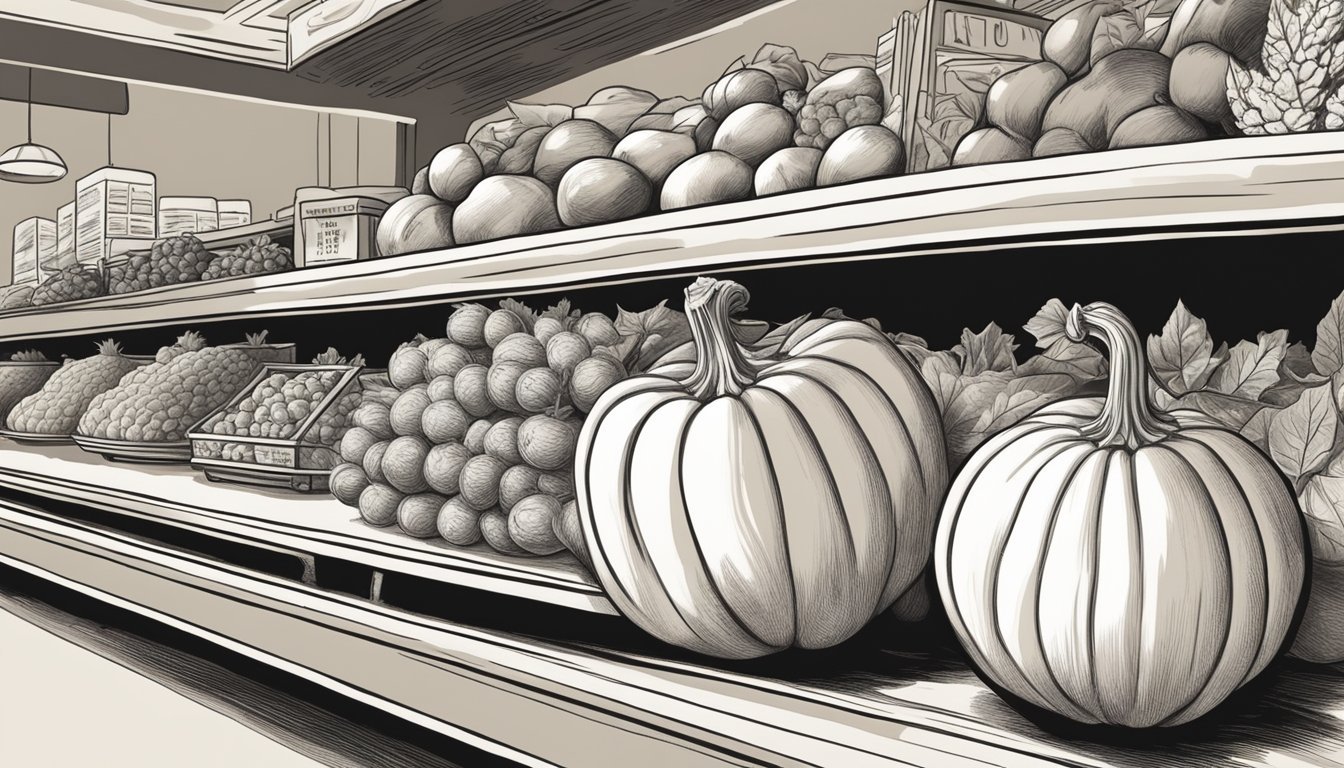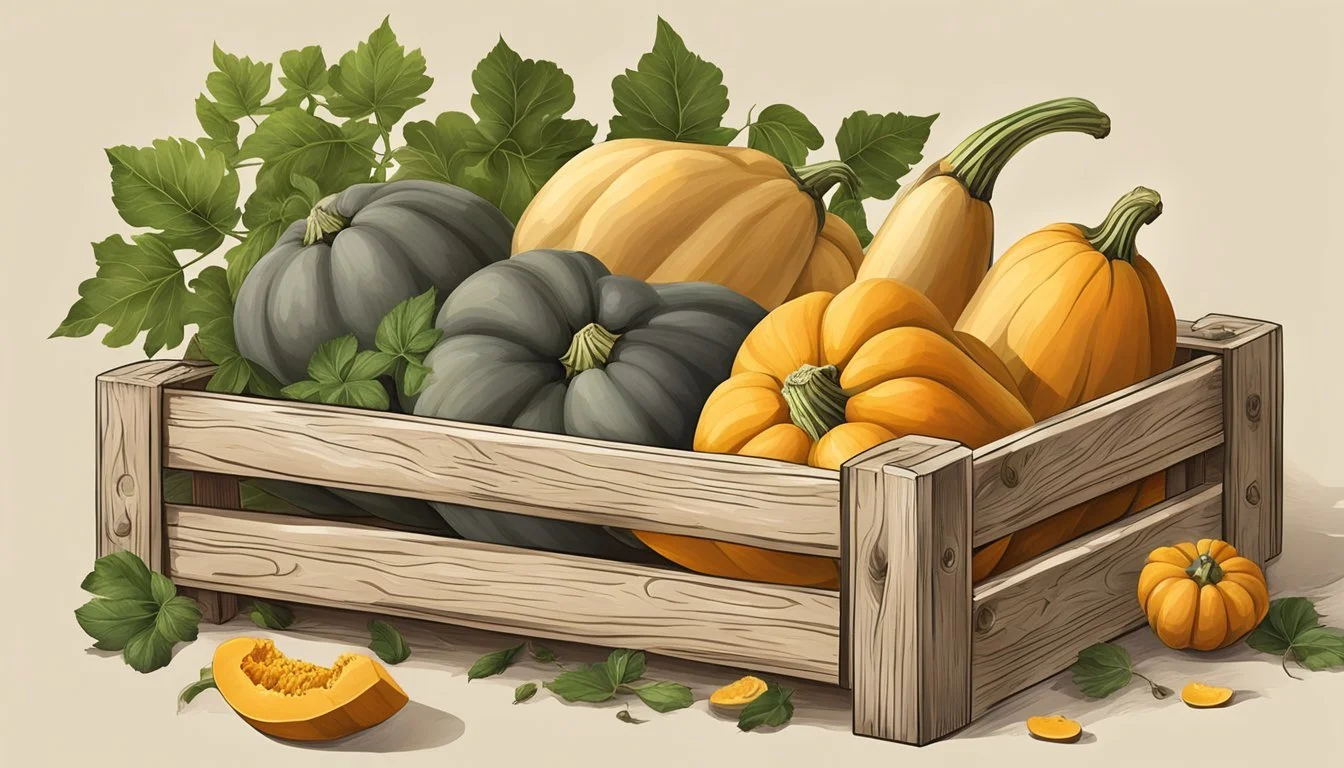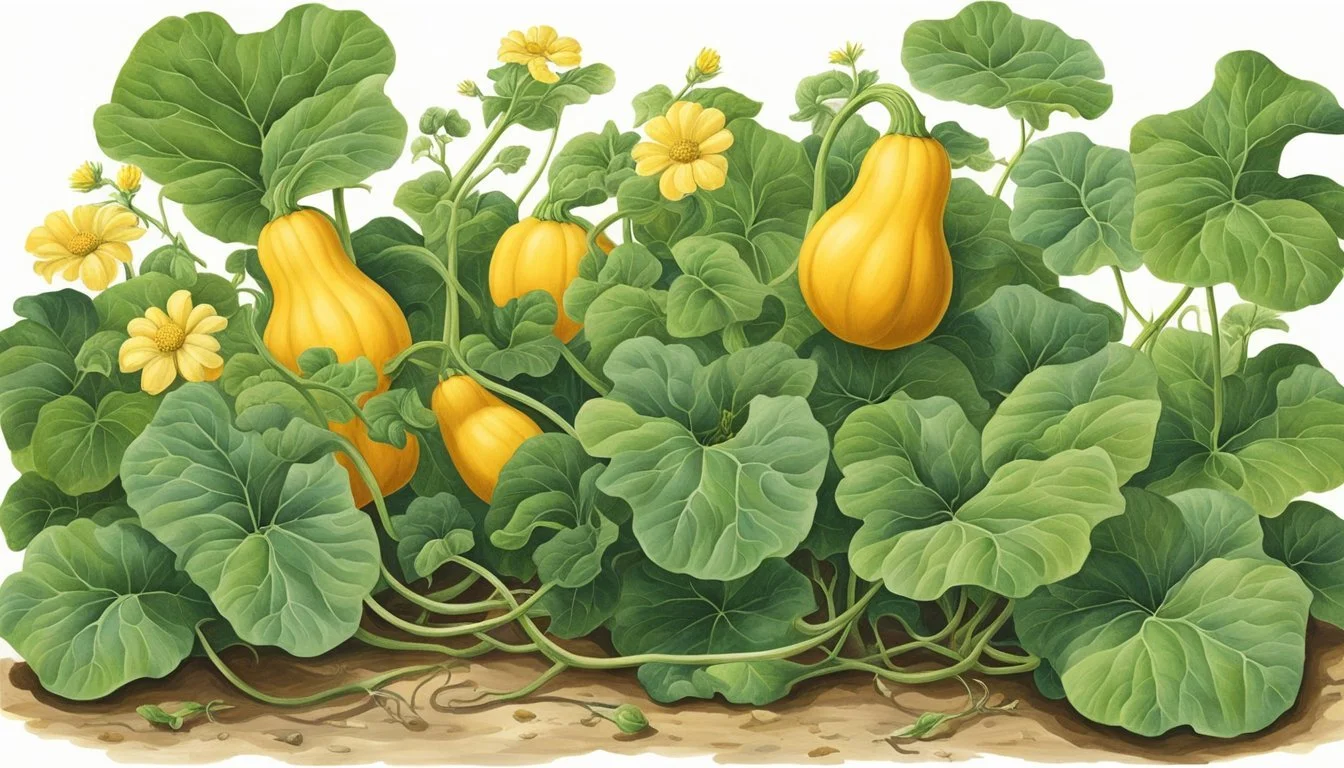How Long Does Butternut Squash Last?
Shelf Life and Storage Tips
Butternut squash is a versatile and hardy winter vegetable known for its sweet, nutty flavor and is a staple in many kitchens during the fall and winter months. Proper storage of butternut squash not only extends its shelf life but also helps maintain its quality and nutritional value. Whether one plans to use it immediately for a hearty soup or roast, or keep it for later use, understanding the optimal storage conditions is crucial.
Uncooked butternut squash can last quite a while when stored under the right conditions. If kept in a cool, dark place, a whole, uncut butternut squash has a usual shelf life of about 1 to 2 months, making it an excellent choice for long-term storage. The key is ensuring that the environment is well-ventilated and that the temperature remains consistently between 50 °F to 59 °F (10 - 15 °C), which can often be achieved in a cool pantry or cellar.
Once butternut squash is cut, the remaining uncooked pieces require refrigeration. In the fridge, cut squash should be wrapped or placed in an airtight container and can be expected to last for approximately 4 to 5 days. Cooked butternut squash, similarly stored in a refrigerator, also has a shelf life of about 4 to 5 days. Its storage versatility extends to freezing, where it can be kept for even longer periods, suitable for those who like to prepare their vegetables in advance or reduce food waste.
Identifying Fresh Butternut Squash
Choosing a fresh butternut squash involves examining its color, texture, weight, and smell. Recognizing the signs of ripeness and freshness ensures that one selects the best quality squash.
Color and Texture
A fresh butternut squash exhibits a uniform beige color on its rind, without any discolorations or dark spots. Its flesh should appear vibrant and firm, indicative of peak freshness and ripeness. The texture is equally important, as the outer skin should be thick and velvety, not glossy, which can suggest immaturity.
Weight and Skin
Butternut squash should feel heavy for its size, signaling that it is dense with flesh and not dehydrated. The skin should be hard and thick, resistant to pressure from a thumb, which confirms its ripeness. A squash with thin or soft skin may have deteriorated in quality or be underripe.
Stem and Smell
The stem of a fresh butternut squash is typically dry and woody; a moist or green stem might suggest recent harvesting, which might mean not fully ripe. A fresh squash should not emit any off smell. If it smells unusual or fermented, it's likely past its prime and should be avoided.
Storage Basics
Proper storage of butternut squash significantly extends its shelf life. Attention to temperature, humidity, and location are critical factors to consider.
Ideal Temperature and Humidity
Butternut squash thrives in conditions that replicate a cool autumn climate. Storage temperatures should remain between 50° to 60°F (10° to 15°C) for optimal longevity. Humidity levels are ideally maintained at a moderate range; high humidity can encourage mold growth and spoilage, while low humidity may lead to dehydration and early decay.
Choosing the Right Location
A cool, dry, and dark place is paramount for storing butternut squash. They can be kept at room temperature if used within a short period; however, for extended storage, a cellar or a cool pantry is preferable. The area should have minimal temperature fluctuations. Cabinets away from heat sources can also suffice. If cut, butternut squash should be placed in an airtight container and can be refrigerated for up to four days or frozen to extend its usability.
Short-Term Storage
For consumers looking to keep butternut squash for a few weeks, understanding the importance of the right storage environment is key. Appropriate storage can ensure the squash retains its flavor and texture until it's ready to be used.
Storing at Room Temperature
Butternut squash can be stored effectively at room temperature provided it remains whole and unpeeled. A cool, dry pantry is ideal, with temperatures ranging between 50°F and 60°F optimal for preserving its quality. One should ensure the storage area is well-ventilated to avoid the buildup of ethylene gas, which can hasten the ripening process of nearby ethylene-sensitive produce.
Refrigeration Guidelines
Once cut, butternut squash should be stored in the refrigerator to prevent spoilage. Pieces should be wrapped tightly in plastic wrap or stored in an airtight container to maintain freshness. It's also advisable to store it away from ethylene-producing foods, as the gas can alter the squash's texture. Refrigerated butternut squash can last for about 1 week when stored correctly.
Long-Term Storage
To extend the longevity of butternut squash, long-term storage methods such as freezing come into play. Employing the right techniques will help maintain the squash's quality, taste, and texture for future use.
Freezing Procedures
When freezing butternut squash, individuals should first peel and cut the squash into chunks or slices, depending on their future use. The pieces can then be placed on a baking sheet lined with parchment paper and set in the freezer to harden slightly, which is often termed "flash freezing." After the pieces are firm, they can be transferred into freezer bags or zip-top bags, ensuring excess air is removed before sealing. Labeling the bags with the date of freezing helps track how long the squash has been stored.
Freezing Prepared Butternut Squash:
Peel and cut squash into desired pieces.
Arrange on a baking sheet in a single layer.
Flash freeze until firm.
Transfer to freezer bags, remove air, and seal.
Label with the freezing date.
Preparation for Freezing
Before butternut squash can be frozen, it should be thoroughly washed and dried to remove any residual dirt or moisture, as excess dampness can lead to frost and freezer burn affecting the texture. For purees or mashes, squash should be cooked until tender, then blended or mashed until smooth. The resulting puree can be poured into ice cube trays for convenient portion sizes. Once frozen, cubes can be transferred to freezer bags, maintaining the same air-removal and labeling process as for solid pieces.
To Prepare Butternut Squash Puree for Freezing:
Wash and dry the squash.
Cook until tender, then puree.
Pour into ice cube trays; freeze.
Store frozen cubes in labeled freezer bags.
Handling Cut Butternut Squash
Once a butternut squash is cut, its shelf life decreases, and appropriate storage methods become crucial to maintain its freshness and prevent spoilage.
Storing Cut and Peeled Squash
To store cut and peeled butternut squash:
Place the cut squash in an airtight container to prevent exposure to moisture and other contaminants.
Refrigerate the airtight container; cut squash can be kept in the fridge for up to 5 days.
Preventing Spoilage
To keep cut butternut squash from spoiling:
Look for mold and soft spots as indicators of bad squash; discard if these signs are present.
Store chopped cubes of squash with a paper towel and a little water in the container to maintain humidity.
Ensure leftover cut squash is not stored in the temperature danger zone (40°F - 140°F) to prevent bacterial growth.
Maximum Shelf Life
The maximum shelf life of butternut squash hinges on its form, whether whole or cooked, as well as how it is stored and labeled.
Whole Butternut Squash
Whole butternut squash, when kept in the proper conditions, can last significantly long. The optimal storage entails a cool, dry place at temperatures around 50°F (10°C) with a relative humidity level of 50-70%. Under these ideal conditions, the shelf life extends to:
2-3 months: in a cellar, pantry, or controlled climate storage
It is paramount to label the squash with the date of storage to track its shelf life accurately.
Cooked Butternut Squash
Leftovers and cooked butternut squash require different handling to extend their usability:
Refrigeration: Label with the date of cooking and store promptly in the fridge.
Shelf Life: approximately 4-5 days
Freezing: For longer preservation, allow the squash to cool, then place in airtight containers or heavy-duty freezer bags, again labeled with the date.
Shelf Life: up to 6 months for plain, cooked squash; up to 1 year for squash prepared in dishes such as soups or purées
The labels serve as reminders of both the storage date and the approximate date by which the squash should be consumed.
Signs of Spoilage
When it comes to butternut squash, the key indicators of spoilage are visual changes and textural degradation as well as alterations in smell and taste. Monitoring these factors can help determine if the squash is past its prime.
Visual and Textural Changes
Visual Indicators:
Mold: Look for any unusual spots or fuzzy growths, which indicate mold.
Color Changes: If the squash has brown or discolored spots, it may be going bad.
Texture: Fresh butternut squash has a firm texture; if it becomes soft or mushy, it's a sign of spoilage.
Aspect Fresh Quality Spoilage Sign Mold Presence None Visible mold growth Color Consistency Even, natural hue Discolored or brown spots Firmness Firm to the touch Soft, mushy, or hollow areas
Textural Changes:
Soft Spots: Check for soft spots that yield to pressure. Squash should be uniformly firm.
Hollow Feel: If the squash feels lighter than it should or sounds hollow, it may have started to rot inside.
Smell and Taste
Odor: A fresh butternut squash should not have a strong smell. An off or sour smell is a clear indication of spoilage.
Flavor: In cases where visual and olfactory checks are inconclusive, a taste test can be the final judge; if the squash has an abnormal taste, it should not be consumed.
Aspect Fresh Quality Spoilage Sign Odor Neutral or slightly sweet Sour or musty smell Taste Mildly sweet, nutty flavor Off or stringy taste
It's important to rely on these sensory assessments before deciding to use butternut squash in cooking to ensure safety and quality.
Nutritional Benefits
Butternut squash, a type of winter squash, offers substantial nutritional value. This starchy vegetable is not only edible and tasty but also a powerhouse of vitamins and minerals.
It is particularly rich in vitamin A, with one cup of cooked squash containing over 350% of the Recommended Daily Intake (RDI). Additionally, it provides a considerable amount of vitamin C, necessary for immune function and skin health.
For individuals looking to increase their fiber intake, butternut squash is a beneficial choice. Its content of both soluble and insoluble fiber aids in digestion and promotes regular bowel movements.
Nutrient Value per cup (205 grams) Calories 82 Carbohydrates 22 grams Protein 2 grams Fiber 6.6 grams Vitamin A 22868 IU (457% RDI) Vitamin C 39 mg (48% RDI)
In addition to these nutrients, butternut squash is a good source of potassium—a mineral that plays a critical role in maintaining proper heart function and regulating fluid balance. Its naturally sweet flavor also makes it a healthier substitute for recipes that call for pumpkin, as it often requires less added sugar.
Butternut squash is not only nutritious but also low in calories, making it a weight-management-friendly food. This versatile vegetable can be enjoyed in various forms, from roasted and pureed to included in soups and stews. It remains a favorite choice among both nutrient-conscious consumers and those looking to add a fresh, seasonal component to their meals.
Cooking and Recipes
Butternut squash is a versatile ingredient, ideal for both sweet and savory dishes. Its fleshy interior becomes richly flavored and creamy when cooked, making it perfect for roasting, pureeing, and incorporation into soups.
Roasting Butternut Squash
To roast butternut squash, one should peel and dice the squash into cubes, then toss them with olive oil, salt, and their preferred seasonings. Spread the cubes in a single layer on a baking sheet and roast at 400°F for 25-30 minutes or until tender and caramelized at the edges. Roasted butternut squash can be enjoyed as a side dish or added to salads, pastas, and grain bowls.
Preparation Time: 10 minutes
Cooking Time: 25-30 minutes
Oven Temperature: 400°F (200°C)
Ingredients: Cubed butternut squash, olive oil, salt, seasoning
Soups and Purees
Butternut squash is a staple in many soup recipes due to its creamy texture when blended. For a delicious soup, one needs to sauté onions and garlic in olive oil, add peeled and diced butternut squash, and cook until the pieces soften. Following this, vegetable broth is poured in, and the mixture is simmered until all ingredients are tender. The contents are then pureed with a blender until smooth for a classic butternut squash soup.
Cooking Vessels: Large pot, blender
Soup Base: Onions, garlic, vegetable broth
Texture: Creamy, smooth puree
Serving Suggestion: With a dollop of cream or a sprinkle of seeds
When using butternut squash in cooking, it's essential to handle cooked squash properly to ensure the best flavor and texture. Whether enjoyed roasted with a sprinkle of seasoning or immersed in a flavorful pureed soup, butternut squash’s natural sweetness and silky consistency are heightened through these cooking methods.
Shopping and Selection Tips
When purchasing butternut squash, individuals should consider it as a versatile winter vegetable that is often available as a seasonal product. For optimal selection, they need to look for squash with a solid beige color, free of blemishes and deep cuts. A matte exterior rather than a glossy one is indicative of proper curing and readiness for storage.
Size and Weight: One should opt for a butternut squash that feels heavy for its size, suggesting a good density of flesh and a lower water content, which contributes to a richer flavor and creamier texture.
Stem Check: A dry and firmly attached stem indicates that the squash is ripe and has been correctly harvested and handled. If the stem is missing or appears moist and green, this might affect the squash's longevity and taste.
Surface and Rind: The following table provides a quick reference for evaluating the squash's surface and rind:
Quality Aspect Desired Characteristic Surface Smooth, uniform color Blemishes None Rind Hard, matte
The butternut squash should have a uniform color with a tough rind, which contributes to a longer shelf life. Until one is ready to use it, the squash should be stored in a cool, dark place with proper ventilation. Keep these tips in mind when next buying butternut squash to ensure a purchase that is both delicious and durable.
Butternut Squash Varieties
Butternut squash falls under the category of winter squash due to its hard skin and long shelf life, in contrast to softer, more perishable summer squashes. It is one of several varieties favored for its sweet, nutty flavor and versatility in dishes.
Winter Versus Summer Squash
Winter squash is characterized by its sturdy exterior, which gives it the ability to be stored for extended periods, making it a valuable seasonal product. Butternut squash, a type of winter squash, is a prime example, with a shelf life that extends from a month up to three if stored correctly in a cool, dark place. The flesh inside is denser and sweeter, fitting for heartier dishes like soups and stews.
On the other hand, summer squash has a softer exterior and more perishable nature, with varieties such as zucchini and yellow squash. They are best enjoyed within a week or two of purchase and lend themselves well to lighter meals like salads and quick sautés.
Other Varieties
There are numerous winter squash varieties beyond butternut squash, each with its distinct qualities:
Spaghetti squash: Known for its stringy interior that resembles spaghetti when cooked, making it a popular low-carb pasta substitute.
Pumpkin: Often associated with fall and used widely from carving during Halloween to a sweetened puree in pumpkin pie.
Though these varieties share the winter squash title with butternut squash, each imparts a unique flavor and texture profile to culinary creations, making them sought-after for seasonal dishes.
Growing Butternut Squash
When starting butternut squash (Cucurbita moschata) in a garden, one should choose a location that receives plenty of sunlight. This crop thrives in full sun and requires warm temperatures to properly develop. The seeds of butternut squash can be directly sown into the soil after the last frost has passed and the soil has warmed, ensuring an optimal growing environment.
Soil preparation is crucial for the successful cultivation of butternut squash. Gardeners often employ the use of "hills," which are slightly mounded areas of soil that improve drainage and facilitate vine growth. The following table provides spacing requirements:
Planting Method Spacing Row Distance Hills 8 feet apart 3 feet apart Bush Varieties 3 feet apart ----
For hills, plant 3-4 seeds and thin them out to the strongest plant after germination. The distance between rows should allow for the extensive vine growth, with typical measurements being approximately 5-6 feet apart.
Butternut squash also demands consistent watering, especially during the time of fruit set and growth. One should take care not to dampen the foliage excessively as this can encourage disease. When the squash has been picked, it should be cured in a warm, dry place to extend its shelf life before storage. Properly cured, the squash can last through the winter months when garden freshness is most appreciated.



